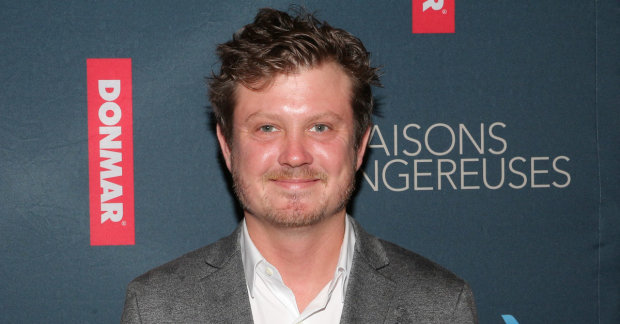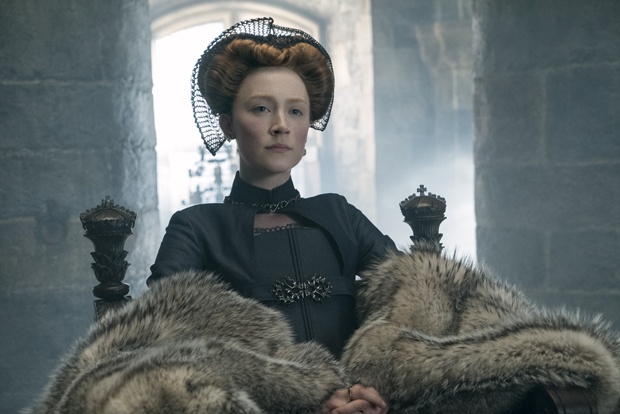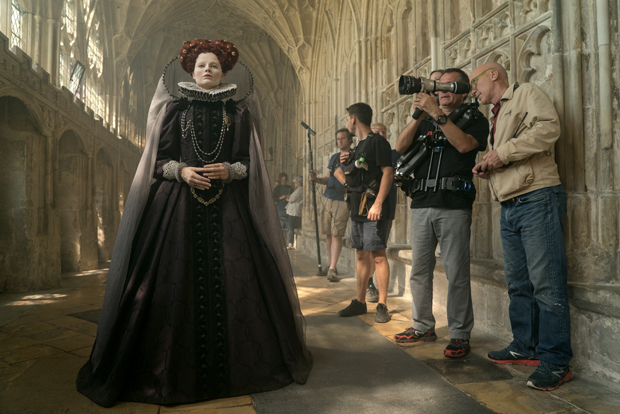House of Cards Writer Beau Willimon Takes On Two Queens With Mary, Queen of Scots
Theater vet Saoirse Ronan and Margot Robbie star in the new film.
It's the costume drama of the winter: Mary, Queen of Scots, the latest retelling of the contentious relationship between Mary Stuart of Scotland, and her cousin, Elizabeth I of England. Directing is Josie Rourke, making her feature film debut after running London's Donmar Warehouse since 2011, and starring are two young giants of contemporary cinema Saoirse Ronan as Mary, and Margot Robbie as Elizabeth.
Behind them is a well-regarded playwright making his first return to the big screen in seven years. Beau Willimon, author of the plays Farragut North (which became the Oscar-nominated film The Ides of March) and The Parisian Woman, as well as creator of the Netflix series House of Cards, had the duties and challenges of dramatizing a relationship that in real life was epistolary. And when you have stars like Robbie and Ronan, you can't not have them come face-to-face.

(© David Gordon)
How did you come to write Mary, Queen of Scots?
I first met Josie Rourke when she was the artistic director of the Bush Theatre in London. We shared an agent at the time and our agent introduced us. We hit it off straight away and made a promise to work together one day. I think we both thought that would be on the stage, but she gave me a ring and said, "Hey would you be interested in collaborating on this film with me?" The opportunity to work with Josie was enough to say yes in and of itself, but given the subject and that Saoirse was going to play Mary, it was a very quick and enthusiastic yes.
What was your knowledge of this subject matter before going into the project? How closely bound to history did you feel you had to stick?
I had a fair amount of knowledge about this period, because my mother is obsessed with Elizabethan history, and we had stacks of books in our house about it when I was growing up. I probably knew more than the average cat, but not enough to write a screenplay. That's where research, and particularly John Guy's book, Queen of Scots: The True Life of Mary Stuart, came into the picture.
It was quite important to us to stay bound to history, and the scene between Mary and Elizabeth is really the only point in the film where we diverge from it. Everything else sticks to the historical record. We didn't really take any liberties except for that one scene, and it's something I knew I wanted to do from the very beginning.

(© Liam Daniel/Focus Features)
Why?
It's quite challenging to tell a story purely through correspondence. It's a cool narrative challenge, but it demands that it comes to a head at some point. Dramatically, the best way to do that is put these two characters in the same room, particularly since the focus of our story is the relationship between these two women. I think there's also an expectation the audience has that they're going to see these two face-to-face. Cinematically, it would have been a shame if we had Saoirse Ronan and Margot Robbie and not allow them to share the same screen at the same time.
I had a conversation with John about it very early on, expecting that he would push back. As I explained it to him, he immediately saw the value in it and recognized that the core emotional truth that we were going to be able to dramatize, in some ways, could be more illuminating than sticking in a literal fashion to the historical record.
As a playwright, what is it like to work on a film with a director who has also spent time in theater?
The one thing about anyone who comes from the theater is a supreme respect for language and text. Some film directors are much more focused on the visual than the language.
There's a theatrical approach that Josie takes to the directing of this film, which is really refreshing. In large part, the language is written really naturalistically. There was definitely an effort on my part to have people speak similarly to the way they would in the 16th century. But in terms of costume design, in terms of framing and
mise-en-scène, there's a very theatrical visual component that Josie brings to it. That lends itself nicely to the story, because the two women really did often have to present masks of themselves. There was a hyper focus on the way they had to present themselves in public and private. To be able to have that tension makes the film more dynamic.
As a male writer in 2018, how do you get in the shoes of two queens who lived 450 years ago?
You have to start with the big universal things that we all understand: love and lust, joy and despair, trust and betrayal. I, in my own fashion, have experienced these things. How can I use that as a way in to understanding these two women's experiences? I had a lot of help along the way. Certainly John's book give a lot of insight into their intellectual and emotional life, and a lot of conversations with Josie helped open my eyes to things I might be blind to. And when you've got Margot and Saoirse, you're halfway there already.

(© Liam Daniel/Focus Features)







